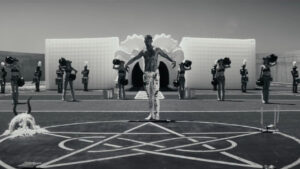In the 1940s, American and German helicopter manufacturers began experimenting with mounting tip jets on the ends of helicopter rotor blades.
These systems helped designers eliminate weight and reduce torque on fuselages. Helicopter manufacturers developed tip jet designs for small one- and two-seat models and large sky crane versions that could lift heavy military and space program payloads.
Tip Jets Allowed Designers To Reduce Helicopter Weights
One of the key goals and challenges of helicopter design has been reducing weight to increase lifting capacity. Tail rotor assemblies, gearboxes, clutches, transmissions, and blowers all add to the weight. Designers determined that one of the best ways to reduce helicopter weight would be to move engines or other power sources out to the tips of the rotor blades.
German Began Work on Tip Jet Designs in World War II
In 1941, German engineer Friedrich von Doblhoff developed a WNF 342 helicopter that would pipe compressed air mixed with aviation gasoline to rotor-tip combustion chambers fitted with car spark plugs. Its radial piston engine powered a compressor that fed a fuel-air mixture through three tubes to the tip jets.
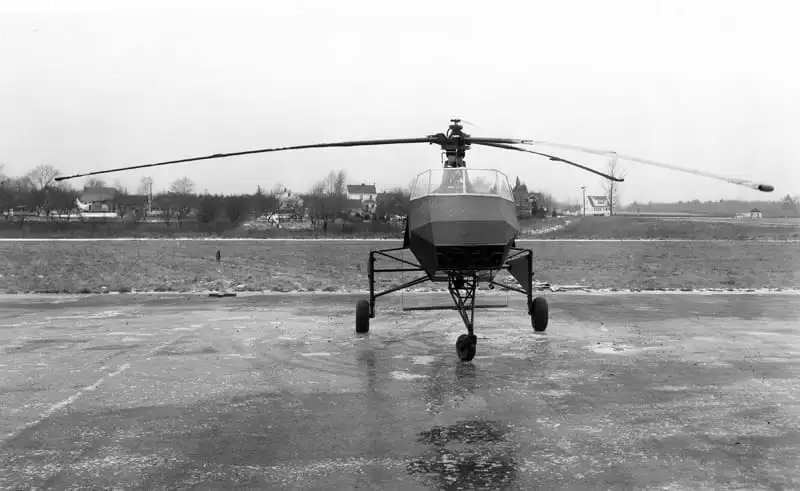
The spark plugs ignited the mixture, causing the blades to turn and produce lift. A pusher propeller behind the main prop provided airflow over the rudder, allowing it to control the helicopter’s direction during flight.
As the rotor spun without power from a central hub, the WNF 342 did not create much torque on the fuselage. However, several problems did occur, including high fuel consumption and the need for a special heat-resistant alloy for the tip jets. The fuel consumption was so high that the Germans decided to only use the tip jets for takeoffs and landings.
The WNF 342 made its first test flight in 1943. The German Navy had wanted to use it for observation and anti-submarine missions. Allied bombing slowed its development, but Van Doblhoff continued working on the project until the war ended. He then went to the United States and continued working on helicopter designs.
Hiller Aircraft Company Develops Several Tip Jet Designs
In 1949, the American Hiller Aircraft Corporation began researching tip jets for helicopters. Their initial designs were similar to the German models. Following testing, Hiller found that jet engines mounted on the rotor tips were more efficient than the previous designs with combustion chambers.
Hiller worked on tip jet concepts for the next 15 years. One of their designs was the two-bladed Hiller XHOE-1 Hornet. This helicopter had ramjet engines mounted on the rotor tips. They weighed 11 pounds each and produced 31 pounds of thrust, enough power for the helicopter’s small, light rotor blades.
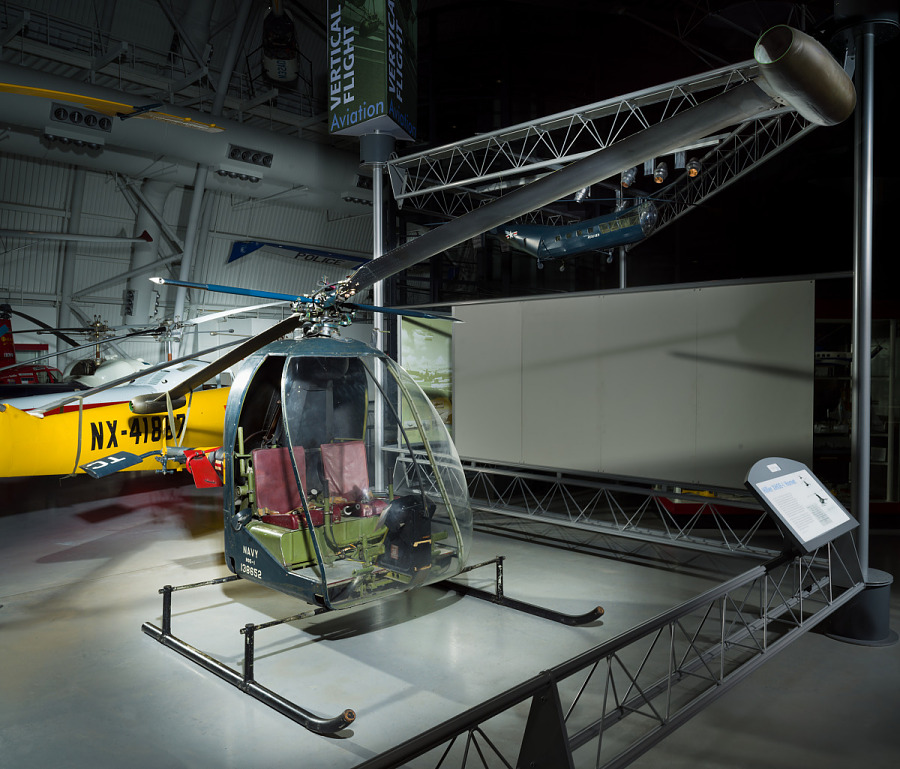
While the Hiller Hornet did fly, designers encountered a major problem with autorotation in the event of an engine failure. The ramjets created excessive drag on the rotors, which forced crews to make rapid descents to keep the rotors from stalling. During an autorotation, the Hornet had to descend at a rate of about 3000 feet per minute, almost twice that of other helicopters. Such a rapid rate of descent forced pilots to begin their landing flare maneuver between 200 and 300 feet, when helicopters typically begin their flare under 100 feet from the ground.
US Army Seeks Heavy-Lift Sky Crane Helicopters
In the 1950s, the US Army announced it wanted a flying crane helicopter capable of lifting radar vans and even tanks. Hiller proposed several designs they called the “Aerial Carryall” or “Flying Truck,” with rotors 169 feet long and various jet engines on their tips.
Hiller Aircraft Company Plans to Build World’s Largest Helicopter
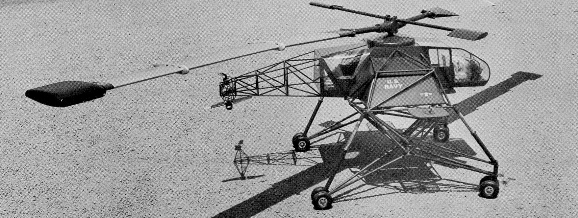
The Army did not accept Hiller’s proposals, but in 1965, the company began working on a tip jet flying crane request from NASA. Its mission would be to recover Saturn V booster first stages, weighing up to 400 tons, for Project Apollo. This required that Hiller design the largest helicopter ever built. It would have a gross weight of 450 tons and a rotor more than 328 feet in diameter.
Hiller designed it with two or more tip jet engines on each blade. The mission profile would have the helicopter wait about 466 miles downrange from Cape Kennedy. It would then snag the rocket stage as it descended by parachute. Eventually, while NASA felt the Hiller Sky Crane would have worked and been cost-effective, it also began developing a reusable space shuttle instead of single-use rockets and halted funding for the project.
Hughes Aircraft Company Tests its Own Sky Crane Helicopter
Hiller was not the only company that tried to develop a tip jet rotor system. In 1949, the Hughes Aircraft Company designed its own version of a heavy lift helicopter, the XH-17. It featured long, stilt-like legs and a box-like fuselage. The legs allowed vehicles to drive under the aircraft and be lifted away. The Army also wanted it to carry ordinance, personnel, and other supplies. During testing, it did demonstrate its potential by lifting payloads as heavy as 10,284 pounds.
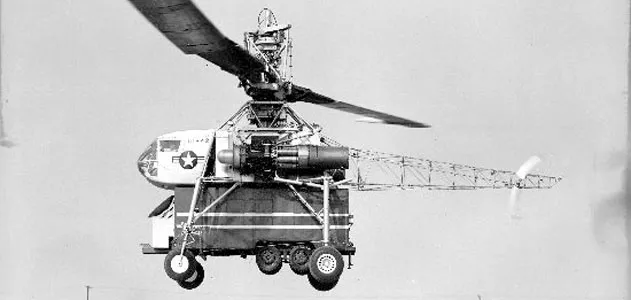
The XH-17’s main rotors were massive. Each weighed 5,000 pounds, was 12 inches thick, and was almost six feet wide. A pair of modified J35 turbojets mounted on each side of the fuselage sent compressed air to the rotor tips. This air mixed with fuel and ignited, spinning the rotors.
However, testing found the XH-17 had a range of just 39 miles, far below the Army’s requirement of almost 100 miles. Its tip jet-mounted rotor blades also produced vibration stresses, which caused it to be frequently grounded during testing. In 1955, the program ended when the rotors reached the end of their design lifespan.





